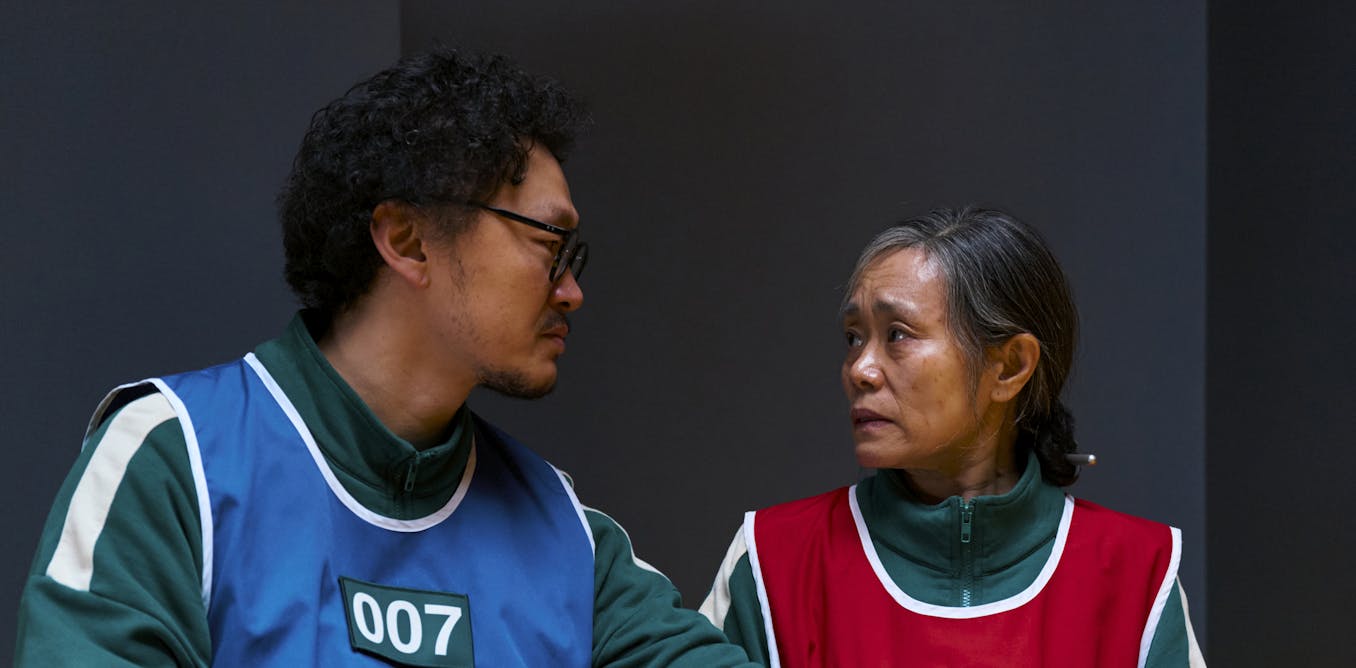Welcome to Naples, Italy! This stunning 4k video captures the beauty of the city like never before, taking you through the streets and landmarks that make this historic city so special.
Starting at the Piazza Cardinale Sisto Riario Sforza, you’ll be led on an evening walk through the heart of Naples. The video is complete with a map of the walk that guides you through the route, and time-stamps for each location visited. You’ll pass through the famous Cathedral Piazza, the oldest street in Naples, Piazza San Gaetano, and many more iconic sites along the way.
This video captures the essence of Naples, showcasing its rich history, vibrant street life, and delicious food. You’ll see famous landmarks, such as the Galleria Umberto I, Piazza del Plebiscito, and the Naples Waterfront.
Throughout the video, you’ll also learn interesting historical facts and descriptions of the locations through the closed captions [CC] available in all languages. Experience Naples as though you are right there, with binaural audio providing a 3-D stereo sound sensation that brings the city to life.
If you’re an Italy enthusiast, a traveller at heart, or simply want to experience the magic of Naples from wherever you are, this video is a must-see. Step into the enchanting city of Naples and discover why it’s a favorite for so many. Whether you’re dreaming of your next adventure or simply want to enjoy a virtual tour, this video is sure to inspire and delight.
Watch the video by Prowalk Tours
Welcome to Naples, Italy. This piazza is just below the side entrance to the Naples Cathedral. This obelisk was erected in 1636. This walk begins on one of the most important streets in Naples, Via dei Tribunali. Via dei Tribunali runs parallel to another important street, Spaccanapoli.
Spaccanapoli tends to have more souvenir shops while Via dei Tribunali has more cafes and restaurants. Via dei Tribunali was the main decumanus (Decumano Superiore), or east-west street, of ancient Greek and Roman Naples. This is the Church and Convent of Girolamini which was completed in 1619. The church façade was recently restored.
Throughout Naples, you are going to see murals of Diego Maradona, who played football (soccer) for Napoli between 1984 and 1991. In May 2023, Napoli won its 3rd Series A Championship title which is often referred to as the scudetto (“small shield”).
This is the reason for the blue and white banners crossing the street. Throughout this walk, you will also see the scudetto, (small shield) with the number 3 inscribed, like the one here. Here they are selling a “Maradona Spritz.” He is kind of a big deal here in Naples.
A Maradona spritz contains 3 parts Presecco, 1.5 parts Blue Curacao an a splash of Club Soda. Naples has the largest designated historic center in all of Europe. Here they are making fried pizza, which is basically a fried calzone.
More than twenty different churches are located along this historic street, including Naples Cathedral and the San Lorenzo Maggiore Basilica Piazza San Gaetano is an important square of the city and dates back to the Greek era.
This landmark is named in the honor of Saint Gaetano and is also home to the monument dedicated to him. This intersection marks the center of the historic center of Naples. It was here that the Greeks and then the Romans had their Forum.
The tomb of San Gaetano is kept inside the Basilica to our right, the Basilica of San Paolo Maggiore. From the square you can explore the underground of the city, through the visit of Underground Naples or of the archaeological excavations of San Lorenzo.
Here you can see a meat and cheese board (tagliere), drinks (apertivi) and a pizza margherita. A pizza margherita is adorned in the colors of the Italian flag: green from basil, white from mozzarella, red from tomato sauce
A pizza margherita typically costs around €4.50 at a local pizzeria, although they will cost more here in the high tourist areas. I had to cut out the original audio in this part because the cafe was playing copyrighted music. Diego Maradona is worshipped like a saint here in Naples.
Neapolitans are very generous and kind people. He wanted to make sure my friend had a drink before we left. Grazie! Ciao! In a Roman city, a decumanus was an east-west oriented road. The main decumanus of a particular city was the decumanus maximus, or most often simply “the decumanus.”
This road was “the decumanus” of the Greek and Roman city of Naples. Spaccanapoli, the main road that runs parallel to this, was the southern decumanus, while Via Sapienza was the northern decumanus.
The cross streets that join the upper and lower decumanus are known as cardini. This alley leads down to Spaccanapoli. Yes, it is safe to walk down. The primary north-south road was called the cardo maximus and their intersection was called the castrum.
We already crossed the cardo maximus, Via Duomo, at the beginning of this walk. Pulcinella is one of the many carnival characters reflecting popular and cultural traditions here in Italy.
The Pulcinella character was born in Naples during the second half of the 16th century. It was invented by the actor Silvio Fiorillo, for the Commedia dell’ Arte. This bust of Pulcinella was donated to the city of Naples in 2012 by a local artist.
I also had to cut out the audio here in this alley because of the music that was playing the background. This statue is one of the most photographed figures in the whole historic center of Naples. This is the Purgatorio ad Arco, a small church built in 1616.
Near the entrance, there are many skulls known as Memento mori, Latin for ‘remember that you die.’ This is mural of the Italian actress Sophia Loren. It was painted by Maker Garcia Chavez in June 2023.
This is the pizzeria Gino e Toto Sorbillo. A pizza margherita here costs €5.90. A Pizza Diavolla, which is similar to an American Pepperoni pizza, costs €6.50.
If you ask for a “pepperoni pizza,” you will most likely get a pizza with green and red peppers on it. Here, a “pepperoni pizza” is called a Diavolla. My favorite pizza is a Pizza Crocche which is a soft, fluffy pizza, stuffed with mozzarella, cooked ham and potato croquettes.
The base of this bell tower is made from the ruins of old Roman buildings. To our right is the Pontano Chapel, built in 1492. This piazza is named after Luigi Miraglia, was a university law professor who served between 1895 and 1897 as rector of the University of Naples.[
During his final years he made the switch to national politics, appointed to the Italian Senate on 14 June 1900. He also served as Mayor of Naples between 30 November 1901 and his death in 1903.
Up ahead is the Church of San Pietro a Majella, built at the end of the 13th century. The bell tower was built in the 14th century.
The “San Pietro a Majella” Musical Conservatory of Naples , one of the most prestigious music schools in Italy , has been located inside the monastery complex since 1826 . The street up ahead is nicknamed “Music Alley” because it is lined with musical instrument shops, especially guitars and other stringed instruments.
I had one of my acoustic guitars repaired there and it was very affordable. This piazza is named after Vincenzo Bellini, an Italian composer, who is among the most famous opera composers of the nineteenth century . These are the ruins of the original Greek wall around the city.
It was the Greeks who found the city of Naples, or as they called it Neopolis (New City). The very first Greeks to settle in Italy in the 8th century BC actually settled near here, in Cuma, which is just 10 miles away along the coast.
After they settled the city of Parthenope in Cuma, they made their way around the bay and founded the city of Neapolis around 600 BC. Even after Naples became a Roman city, Naples remained a Greek speaking city.
We are now walking up the steps of the Palazzo Conca, which dates back to 1488. It originally belonged to Count Scipione. The southern half of Italy became known as “Big Greece” or Magna Graecia both by the Romans and the Greeks.
Pithecusae on the island of Ischia is considered the oldest Greek settlement in Italy, and Cumae their first colony on the mainland of Italy. Naples boasts a rich historical legacy spanning more than 2,500 years, establishing itself as a prominent city throughout that time.
Prior to the Greeks arriving, the entire Gulf of Naples had been inhabited since the Bronze Age by Italic peoples, whom the Greeks encountered and called Ausones and Opici. This a statue of Vincenzo Bellini, who had been associated with the nearby Music Conservatory of San Pietro a Majella.
Bellini was born in Catania. By 5, he had become a master of the piano. He composed her first 5 pieces by age 6. By age 7 he had learned Latin. Between 1954 and 1984, much of the original Greek wall had been excavated but only this portion was left uncovered.
When Bellini was 18, he was awarded a stipend to support his musical studies at the Real Collegio di Musica di San Sebastiano in Naples. We are now going to walk down Via Port’Alba and into Piazza Dante.
While this entrance is called Port’Alba, the actual Port’Alba is on the other end of the short road. On the wall on the right is a plaque from 1796 which states that merchants are not allowed to setup stands along this street.
Here is the world’s first pizzeria, which opened here in 1830, Antica Pizzeria Port’Alba. The pizzeria first opened, however, as a mobile stand in 1738. Not long after the plaque was placed on the wall, book shops opened up along this street which are still here today.
The Port’Alba is one of the old city gates, built in 1625 in order to allow passage through the old Angevin walls which were built in the 14th century. The Angevins were a royal house of French origin that ruled England in the 12th and early 13th centuries.
They also ruled over Sicily and Naples at that time. This is the Port’Alba. The building, with the two characteristic curved wings, was originally a monastery but today is a local high school. The monastery was originally built in the 600s.
The large niche at the center was meant to hold a statue of Charles III, the first Bourbon king of Naples. It is now the entrance to the school. At the center of the piazza stands a large statue of Dante Alighieri, placed here in 1871.
This area was closed for a couple years in the early 2000s for the construction of the underground subway. The piazza is now connected to the Vomero section of town a few miles away and 600 feet higher in elevation.
The subway also has stops near the Castel Nuovo and ends at the Napoli Centrale train station. We are now going to walk down Via Toledo and into the Spanish Quarter (Quartieri Spagnoli). The buildings on the right side of the road were built in the 1600s and are part of the Spanish Quarter.
The buildings here on the left side of Via Toledo were built in the 1920s and 1930s during the fascist government of Benito Mussolini. This road is named for Don Pedro di Toledo, the Spanish viceroy of Naples from 1532 to 1553
It was from the balcony of this building in 1860 that Giuseppe Garibaldi announced the annexation of the Kingdom of the Two Sicilies to that of Italy. Italy has only been a unified country for 161 years. Before that it was fragmented into several kingdoms, duchies, and city-states.
The main entities of the Italian peninsula were the Kingdom of Sardinia, the Kingdom of the Two Sicilies, and the Papal States. Rome was the last city to become part of the unified Italy.
The Papal States were a series of territories in the Italian Peninsula under the direct sovereign rule of the pope from 756 until 1870. By 1861, much of the Papal States’ territory had been conquered by the Kingdom of Italy.
In 1870, the pope lost Rome and had no physical territory at all, except the Basilica of St Peter and the papal residence around the Vatican. After Italy was unified in 1861, Turin became the first capital. Florence became the capital of the newly unified Italy between 1865 and 1870.
Finally, in 1871 Rome became the capital of the Kingdom of Italy, and in 1946 that of the Italian Republic. So what does that all mean? It means that other Italian cities, not the least of which is Naples, still challenge Rome’s status and authority.
I recorded these guys playing Here Comes the Sun by the Beatles, but again, the music is copyrighted which means I had to cut it out. Prior to being unified, Naples was home to Kings and Queens, money and power. Forza Napoli!
After the unification of Italy, with capital status being awarded to Rome, Naples became like the unwanted stepchild. Naples and the Neapolitan people still hold a strong feeling of animosity towards Rome…as do Romans towards Neapolitans.
After Italy became unified, it took another 100 years for Italians to all speak the same language, thanks in part to television. Except in Naples. They wanted no part of it. Families and merchants across Napoli often prefer to speak Neapolitan, the old language of the Kingdom of Two Sicilies.
It’s this fierce attitude of independence that I really admire about Neapolitans. It is not in their nature to obey and follow rules, hence the chaotic reputation that can be misinterpreted by outsiders. This also lends to the reputation of Neapolitans as swindlers who will charm the shirt off your back.
Every night here in Italy, the locals go out for their evening stroll which is known as a passeggiata. The passeggiata is a time-honored Italian tradition that calls for a stroll in the evening, usually after dinner. Italians typically dine late and most restaurants do not even open until 7pm.
You can always find something to eat at any time of the day though here in the city. During the day there is market setup here.
There used to a be a Disney store here on the left. In 2021, Disney announced they were closing almost all of their stores to focus on e-commerce. We are now entering the Spanish Quarter, the most densely populated area in Naples.
You can follow along using Google Maps by clicking on the link in the video description. All the titles in the video correspond to the markers on the map.
And if you are enjoying this tour so far, I would appreciate it if you would leave a Like on the video and Share it with a friend. Thank you! The Neapolitan language is stronger here than anywhere else.
The Spanish Quarter consists of a grid of around eighteen streets by twelve, and has a population of some 14,000 inhabitants. The Spanish Quarters were built in the early 16th century to house the Spanish troops in the area. They were built 4 or 5 stories tall which is impressive for the 1600s.
Mark Twain visited Naples in the 1870s and even he commented on the tall buildings of the Spanish Quarter. The Spanish Quarters represent some of earliest, if not the earliest, examples of modern urban planning in Europe.
In the early 16th century, Naples came under Spanish rule, primarily under the reign of King Charles V of Spain. To strengthen their control over the city, the Spanish built defensive walls around the historic center of Naples, including the creation of the Spanish Quarter.
The Spanish Quarter was initially designed as a military barracks and housing for the Spanish troops stationed in Naples. See this guy in the white shirt? I met him once before, 4 years ago, while I was filming a different walking tour of Naples. He spoke to my camera then too.
He is saying that the Quartieri Spagnoli is the best! 🙂 The housing was strategically located near the Castel dell’Ovo and the city’s harbor to defend against potential threats.
Over time, the Spanish Quarter evolved as the population of Naples grew, and it became home to not only military personnel but also a mix of Neapolitan residents. The area’s narrow, labyrinthine streets and tightly packed buildings have a distinct architectural character. And everyone is friendly! 🙂
The presence of Spanish soldiers and the mingling of different cultures in the Spanish Quarter contributed to a unique blend of Neapolitan and Spanish influences in the local culture, including culinary traditions, dialect, and music. The Spanish Quarter has also faced challenges throughout its history, including overcrowding and poverty.
Many of its buildings lack modern amenities, and the area has historically been associated with lower-income residents. Time for a Graffa break! These are the best! In recent years, efforts have been made to revitalize and modernize the Spanish Quarter while preserving its historic charm.
These efforts include infrastructure improvements and initiatives to improve living conditions for its residents. This road leads up to the now famous mural of Diego Maradona. The area in front of the mural has become a shrine dedicated to the late football star as well as to the team.
This street art is of Eduardo de Filippo, an Italian actor, director, screenwriter and playwright, best known for his Neapolitan works Filumena Marturano and Napoli Milionaria. For his artistic merits and contributions to Italian culture, he was named senatore a vita by the President of the Italian Republic Sandro Pertini.
Eduardo was born in Naples in 1900. He died in Rome in 1984. The square below the mural was officially renamed Largo Diego Maradona as a way for the city of Naples and its residents to pay tribute to the iconic footballer.
Maradona’s time at Napoli is celebrated as a golden era for the club, as he led them to their first-ever Serie A titles in the 1986-1987 and 1989-1990 seasons, along with other significant achievements.
The square features a mural and various artworks dedicated to Diego Maradona, showcasing his impact on the city and its football culture. Diego Maradona remains a beloved figure in Naples, not just for his footballing prowess but also for the deep connection he forged with the city and its people during his time there.
This is where I stopped filming on this night. I started filming again at this same location the next night, which is why you will see it get brighter outside. It is now 8:05 PM on Saturday, July 22nd. Maradona’s larger-than-life personality and extraordinary skills on the field continue to resonate with Neapolitans.
Before we walk back down to Via Toledo, I want to take you up to a scenic viewpoint on the road up behind the neighborhood. As you can see here, the Spanish Quarter neighborhood is built along an incline.
The houses to our left are built right up against the hillside with some having a second entrance on the upper road. These steps lead up to Corso Vittorio Emaneule, which starts by the Naples Archaeological Museum, wraps around the Castel Sant’Elmo and ends by the Mergellina Port.
At this point, we are directly below the Castel Sant’Elmo and could continue walking up a steep set of steps to the Castle. Castel Sant’Elmo was originally constructed in the 14th century during the reign of King Robert of Anjou (Robert I).
The castle’s position on Vomero hill provided it with a commanding view of the surrounding area, making it an ideal location for both defense and surveillance. That lone tall building is the Hotel NH Napoli Panorama.
The building with the large green roof is the Chiesa di Gesù Redentore e San Ludovico d’Angiò on Spaccanapoli. From here you can see the dome of the Galleria Umberto where we will be in 18 minutes. Across the Bay of Naples is Sorrento. That ferry is most likely returning from Capri.
Okay, now we are going walk back down through the Spanish Quarter to Via Toledo. After we walk through the Galleria Umberto, we will pass through the Piazza del Plebiscito to the Naples waterfront.
I filmed an evening walk of Naples last year, but it was only an hour and 20 minutes long. I had to stop filming here in the Spanish Quarter because my back as hurting too bad from carrying this heavy camera.
I have since developed methods which allow me to film longer…before my back starts hurting too bad and I have to stop. 🙂 You have to always be aware of your surroundings here in Naples. Cars and Vespa’s go flying through the narrow streets and they are expecting you to see them.
People often say that the driving here in Naples is crazy, and it is…but it works. The system of driving without rules works because everyone is driving without rules, which means you have to constantly be aware. If everyone is hyperaware while they are driving, there are fewer accidents.
This means you can drive into oncoming traffic if you want, because the other drivers are expecting the unexpected. There is no road rage (most of the time) if someone gets cutoff or forced to move over because it’s all part of the system.
I lived in Italy for 8 years and in that time, I only saw 3 or 4 serious bad accidents. Fender benders, broken side mirrors and scrapes on the other hand….that just comes with the territory. Every car has them. They are known as a “Naples Kiss.”
So can you come here and rent a car and drive around Naples? Absolutely. As long as you understand that it is not about “right-of-way” here and more about, do you have the time and space to make your move.
If you see everyone stopped at a red light, that is probably because there is a traffic camera there. Some rules are followed…but not by everyone. If you have the right last name here in Naples, you can do what you want.
Many highways have traffic cameras here and most drivers will drive the speed limit in those areas while others will go flying by at 100 mph…why? Because they have the right last name. Diego Maradona was born in Argentina in 1960.
As a boy, Maradona was given the nickname “El Pibe de Oro” (“The Golden Boy”), a name that stuck with him throughout his career. During his time with Naples he earned 188 caps and scored 81 goals. In all, he earned 491 caps and scored 259 goals.
In the 1986 World Cup quarter final, he scored both goals in a 2–1 victory over England that entered football history for two different reasons. The first goal was an unpenalized handling foul known as the “Hand of God.”
The second goal followed a 60 m dribble past five England players, voted “Goal of the Century” by FIFA.com voters in 2002. Diego Maradona was addicted to cocaine which interfered with his ability to play football. We are now back on to Via Toledo.
Maradona was banned from football in both 1991 and 1994 for abusing drugs. On November 25th, 2020, at the age of 60, Maradona suffered cardiac arrest and died in his sleep at his home in Dique Luján, Buenos Aires Province, Argentina
The Galleria Umberto is in the shape of a Latin cross. There are entrances at each end of the cross. It was built between 1887–1890, and was the cornerstone in the decades-long rebuilding of Naples—called the risanamento (lit. “making healthy again”)—that lasted until World War I.
The Galleria was named after Umberto I, King of Italy at the time of construction. The building is part of the UNESCO listing of the Historic Centre of Naples as a World Heritage Site. The Galleria Vittorio Emanuele II in Milan looks nearly identical to this galleria in Naples.
The two gallerias appear to be the exact same size but the one in Milan is slightly bigger. It’s everyone’s favorite! McDonalds! 🙂 Naples is a great city and with the Amalfi Coast, islands and Pompeii all nearby, it should be next on your travel list.
If you would like to take a trip to Italy, here is my recommendation. Fly into Naples and take the Alibus to the train station. Get on the train to Sorrento and make Sorrento your first home base.
After spending a day or two in Sorrento, rent a scooter and ride the Amalfi Coast making stops along the way in Positano, Amalfi, Ravello, Minori, Maiori and more. Then, get on the train and spend one day Pompeii. If you have the energy, go a few more train stops and visit Herculaneum.
The next day, take the train here to Naples and spend the day doing this same walk. On the following day, take the 20 minute ferry from Sorrento to Capri and spend a day or two there.
If you still have time, pack up and take the train to Pozzuoli. From there you can take day trips to the islands of Ischia and Procida. While you are in Pozzuoli, check out the Roman Amphitheater, just like the Colosseum in Rome. Have dinner along the waterfront.
If you still have time, take the train back to the Naples train station and take the fast train up to Rome. You can be there in less than an hour. Spend 2 or 3 days in Rome and then fly out of Rome.
The Piazza del Plebiscito is one of the most famous and historic squares in Naples, Italy. In the 17th century, during the Spanish Viceroyalty of Naples, the Royal Palace of Naples (Palazzo Reale) was constructed on the eastern side of what would later become the piazza.
The palace served as a royal residence for various ruling dynasties, including the Spanish Bourbons and the French. In the early 19th century, under the rule of King Joachim Murat, husband of Napoleon’s sister Caroline, the square was expanded and renamed Piazza del Plebiscito (Plebiscite Square).
The term “plebiscite” referred to a popular vote that was held to legitimize the new regime. Check out Conan O’Brian’s visit to Naples on Youtube to understand why I am zooming in on this statue.
Surrounding the square are several other statues and monuments, including the Basilica of San Francesco di Paola, a neoclassical church that resembles the Pantheon in Rome. Just to recap, on your first visit to Italy, you can see Naples, Sorrento, the Amalfi Coast, Pompeii, Herculaneum, Capri, Pozzuoli, Procida, and Ischia.
If you have any questions, just send me an email and I will do my best to give you an answer. We are now approaching the Naples waterfront along Via Nazario Sauro.
The history of the Naples waterfront along Via Nazario Sauro is a fascinating tale of urban development and transformation during the late 19th century. To understand the changes that occurred in this area during that time, it’s important to consider the broader context of Naples’ growth and urban planning.
Naples is a historic port with a long and storied history as a major maritime hub. By the late 19th century, the city’s waterfront was a bustling center of trade, commerce, and industry.
However, the waterfront area, like many port cities of the era, faced several challenges related to congestion, inadequate infrastructure, and sanitation. In response to these challenges and to modernize the city, a significant urban planning and redevelopment project took place in Naples during the late 19th century.
The base of Mt. Vesuvius is about 7 miles away. One of the major changes to the Naples waterfront during the late 1800s was land reclamation. This entire waterfront area did not exist before the late 19th century. In fact, the waterfront back then was about 600 ft further inland.
The process involved filling in the seafront areas with landfill, creating more space for urban development. This reclamation allowed for the expansion of the city’s road network and the construction of new buildings and infrastructure.
The late 19th century saw the construction of many impressive buildings along Via Nazario Sauro and the surrounding area. This rotunda is my favorite spot in Naples. Here at the rotunda you can see the colorful blue and red fishing boats with Mt. Vesuvius in the background.
During the day, the locals are down here swimming and sun bathing while the fisherman work on their fishing nets. Woops..didn’t mean to interrupt you there. Please, continue.
It was here at the rotunda that I ran in to the guy 4 years ago that I met again tonight in the Spanish Quarter. Naples is the 3rd largest city in Italy with a population of nearly 1 million residents.
Its province-level municipality is the third-most populous metropolitan city in Italy with a population of 3,115,320 residents, and its metropolitan area stretches beyond the boundaries of the city wall for approximately 20 miles (32 km). Naples was the most-bombed Italian city during World War II.
Though Neapolitans did not rebel under Italian Fascism, Naples was the first Italian city to rise up against German military occupation The city was completely freed by 1 October 1943, when British and American forces entered the city.
This fountain originally stood next to the royal palace in the Piazza del Plebiscito where it stood near a colossal ancient statue, and thereby gained its name. It was moved here in 1905.
When the Germans left the city, they burned the library of the university, as well as the Italian Royal Society. They also destroyed the city archives. Time bombs planted throughout the city continued to explode for nearly a month after they left.
We are now approaching the Castel dell’Ovo (Egg Castle) here on our left. The castle, which is the oldest in Naples, is built on a small island called Megaride.
The island of Megaride is where the Greek colonists of Magna Graecia from Cumae founded the original nucleus of the city in the 6th century BC. The castle is believed to have been built on the remains of the ancient Roman villa of Lucullus (a Roman general and politician).
Before the waterfront was extended out and this road was created, the island was actually separate from the mainland. This is the first time in 8 years that I have seen the left tower. It has been covered in scaffolding and tarps for years.
The castle’s name comes from a legend about the Roman poet Virgil, who had a reputation in the Middle Ages as a great sorcerer and predictor of the future. In the legend, Virgil put a magical egg into the foundations to support the fortifications.
It remains there along with his bones, and had this egg been broken, the castle would have been destroyed and a series of disastrous events for Naples would have followed. During the Byzantine period, the fortress was further fortified. It played a strategic role in defending Naples against various invaders.
In the 12th century, during the Norman rule of Naples, the castle underwent significant renovations and was used as a royal residence. From here we are looking out over to the Port of Mergellina. During the day, a lot of people swim here.
During the day, the castle is open and free to visit. In the 19th century, a small fishing village called Borgo Marinaro, which we are approaching now, developed around the castle’s eastern wall.
Underwater archaeologists have discovered what appears to be a 2500-year-old harbor associated with the origins of the first Greek settlement of Paleopolis in the sea next to the castle. Over the centuries, the castle saw various uses, including being a military outpost, a prison, and a residence for notable figures.
The castle was also used for defense during times of conflict. This is a great area to come down to for dinner on your visit. I highly recommend a visit to the castle. You will free access to the rooftop terrace which offers great views of the Naples waterfront and Mt. Vesuvius.
If you walk down this ramp, it is almost a guarantee that this lady will approach you and ask if you want a boat. We are going to finish up this evening tour by walking along the waterfront to the Monumento ai Caduti del Mare.
Thanks for watching. I hope you can visit Naples soon and experience it for yourself. If you enjoyed this tour, please leave a LIKE on the video and SHARE it with a friend. Thanks! Ciao! Ciao!
Video “Naples, Italy – MY FAVORITE CITY – 4K60fps with Captions” was uploaded on 01/13/2024. Watch all the latest Videos by Prowalk Tours on Gretopia






































